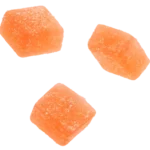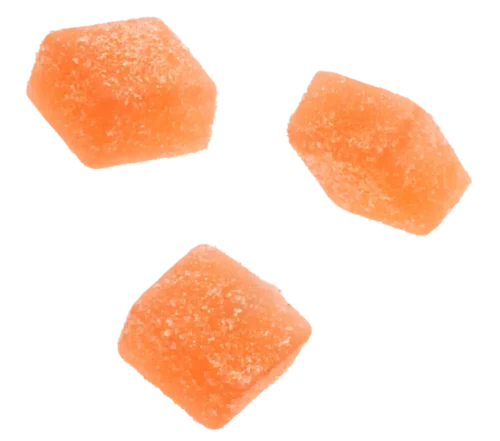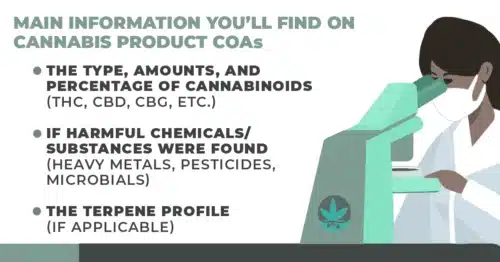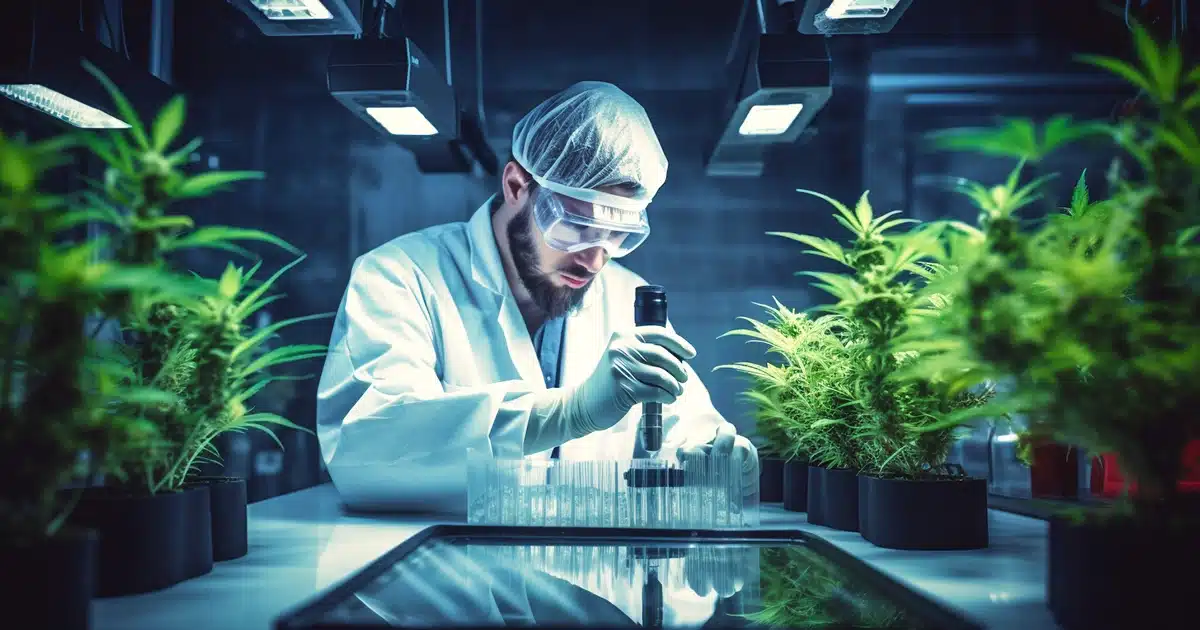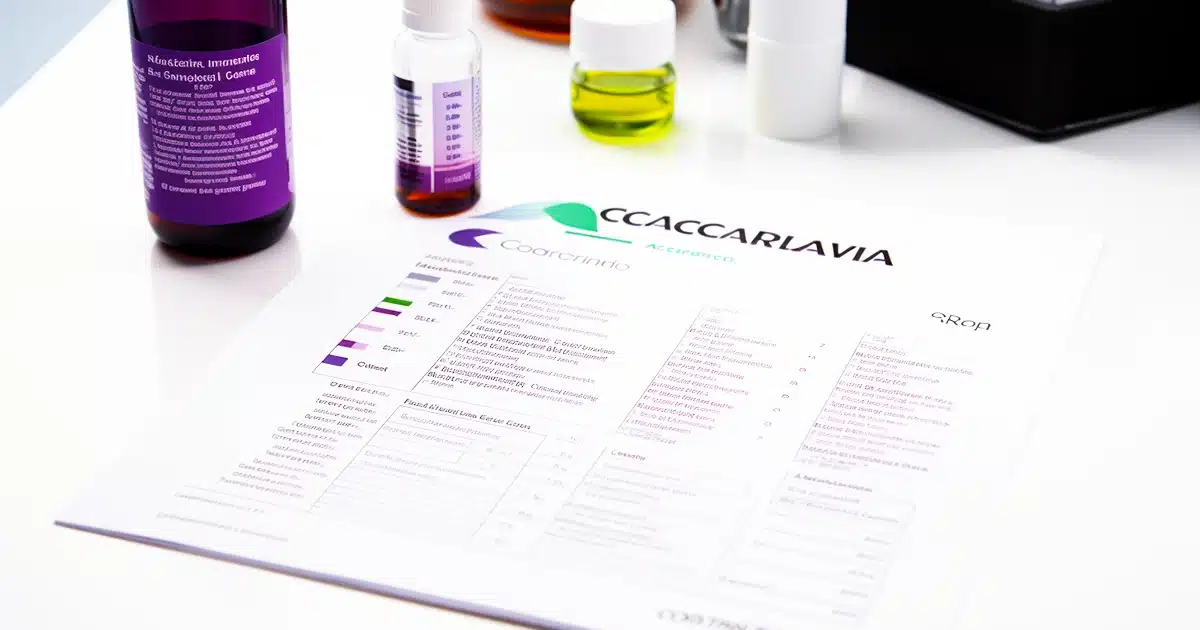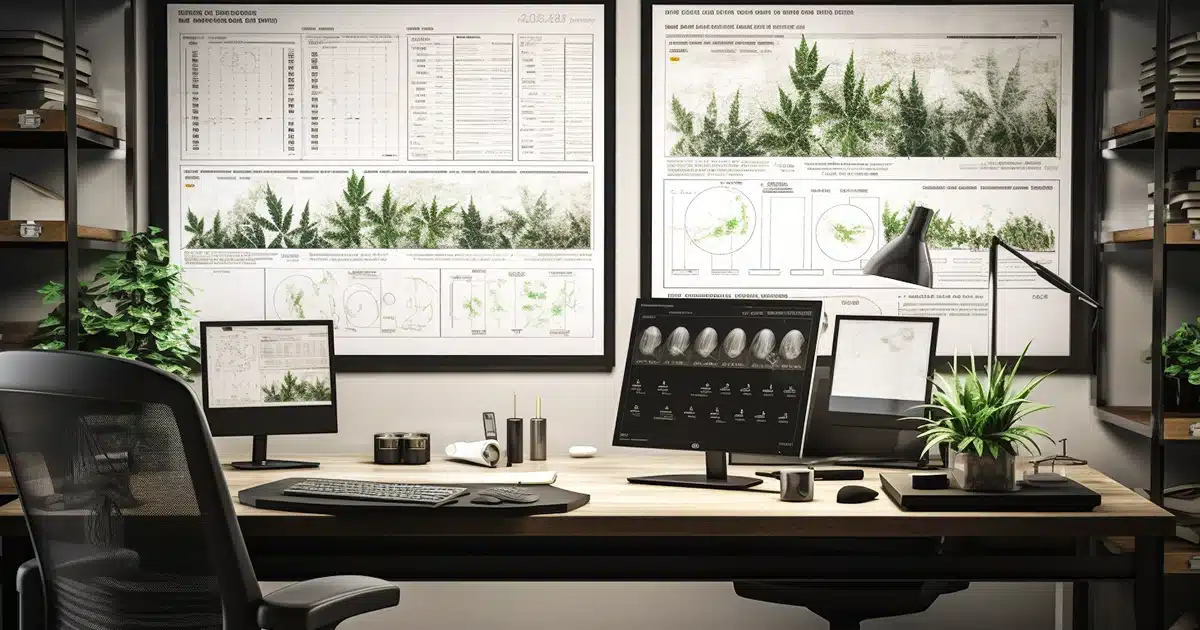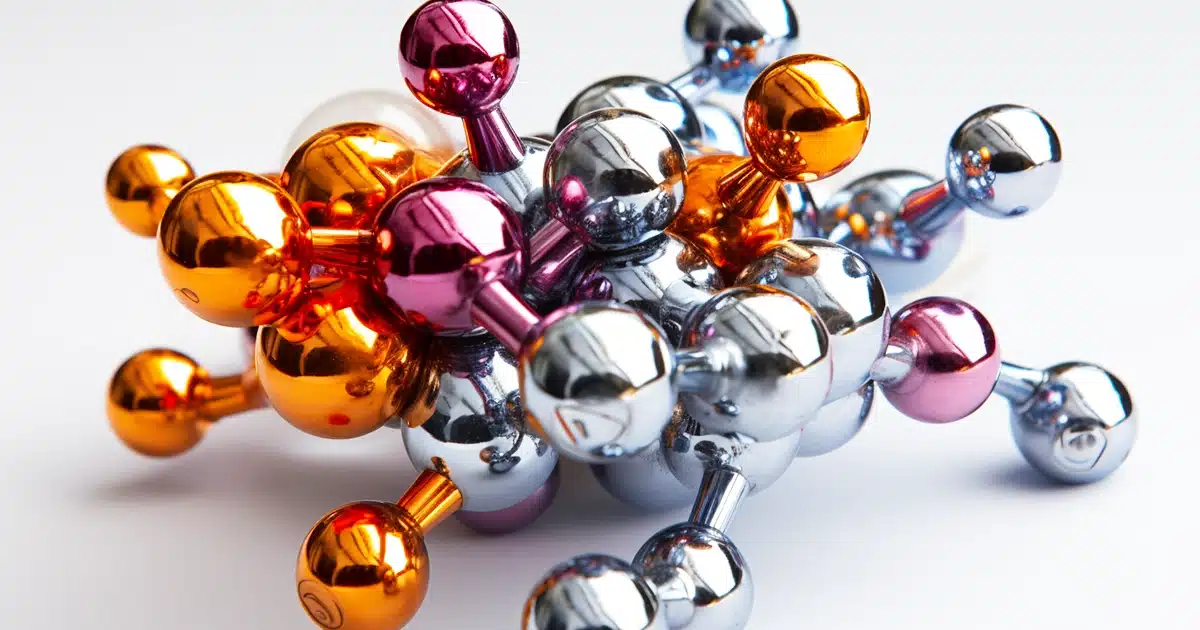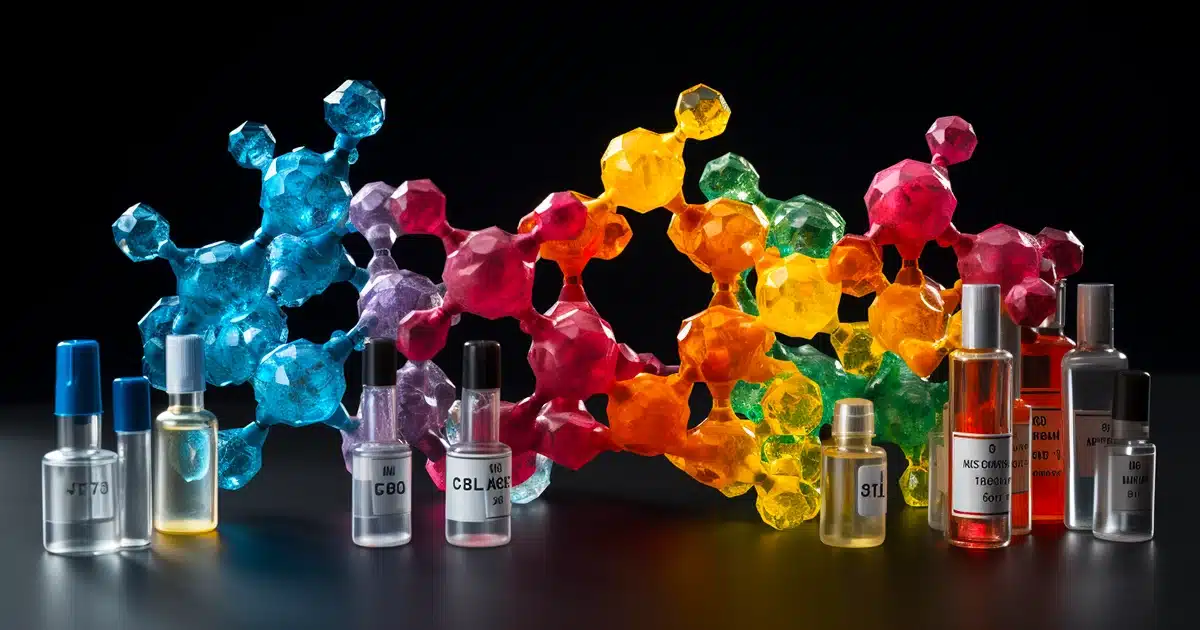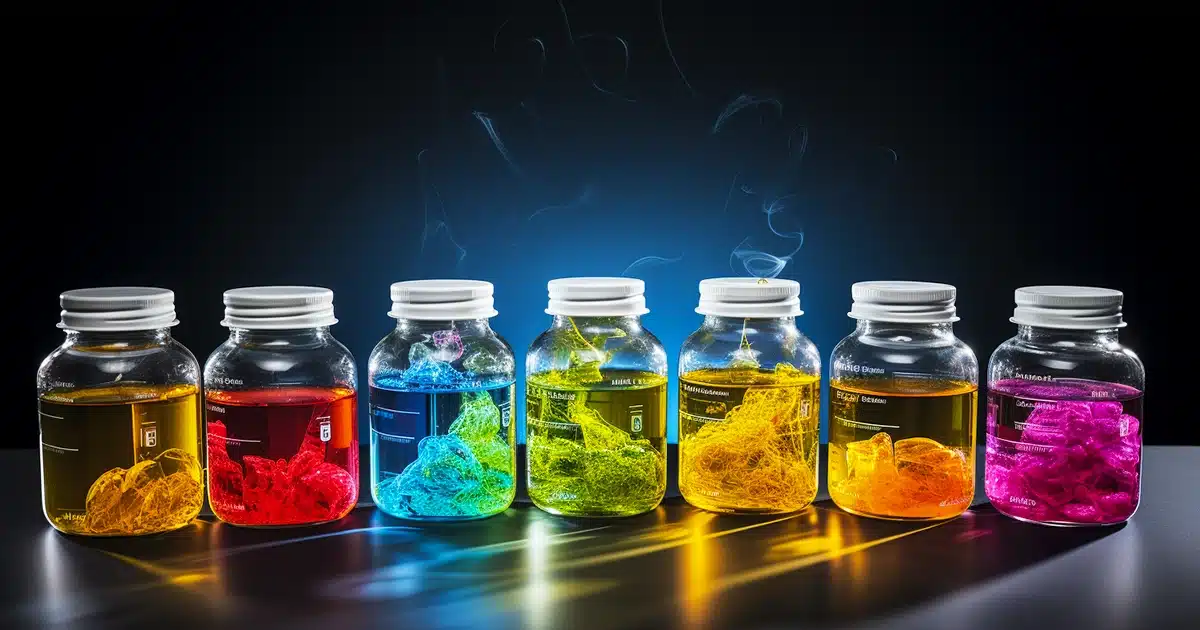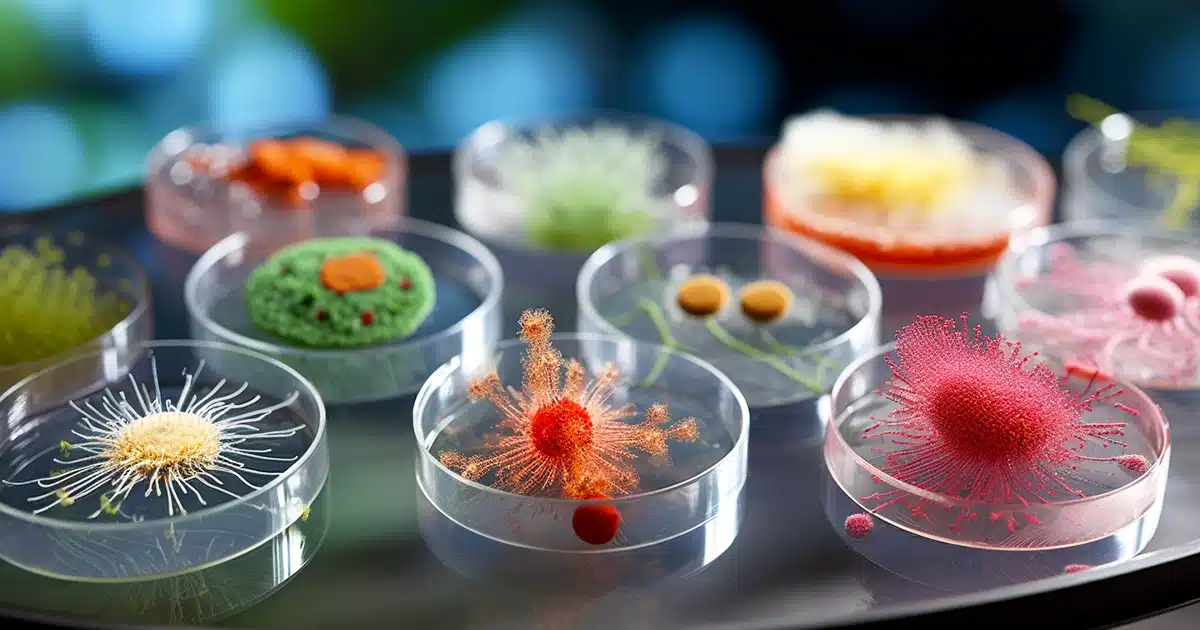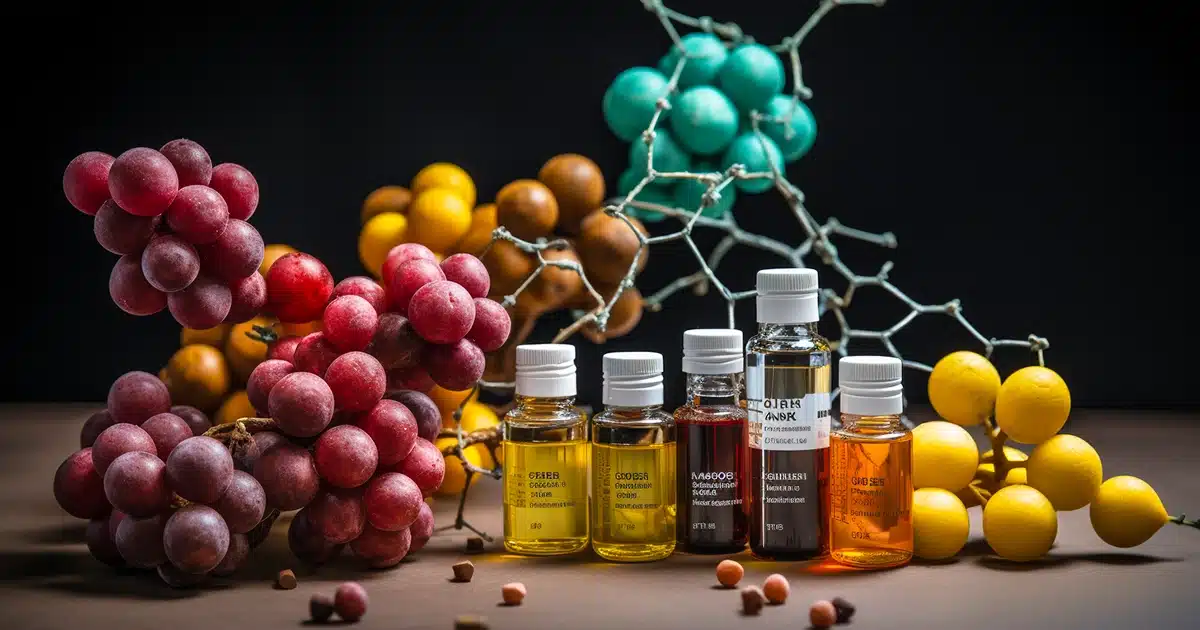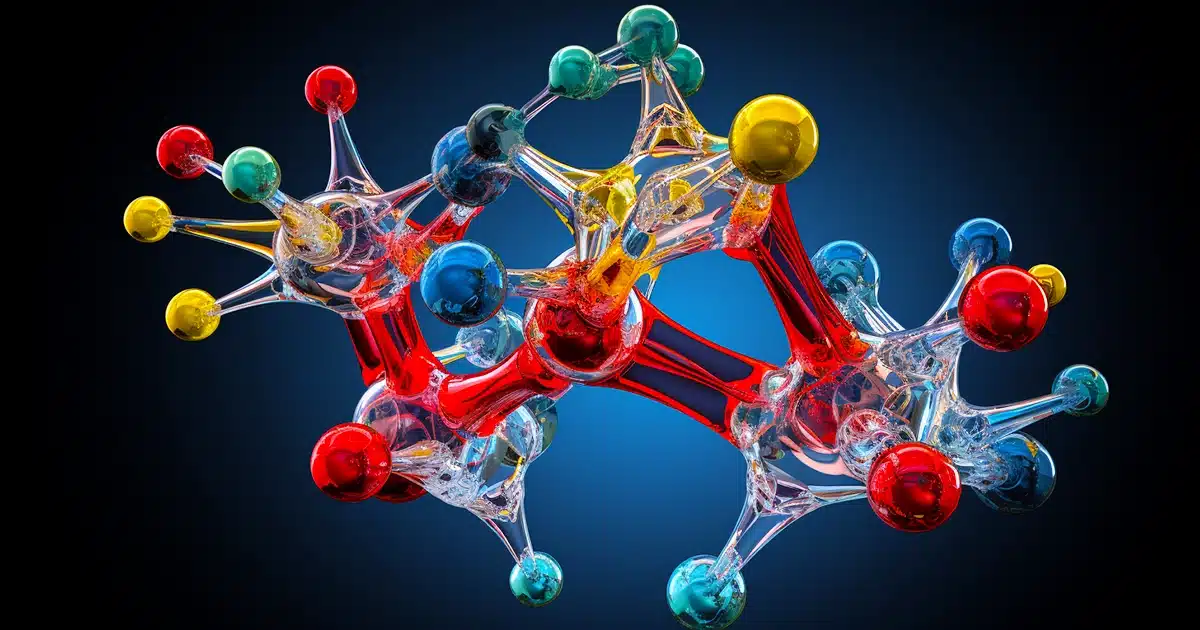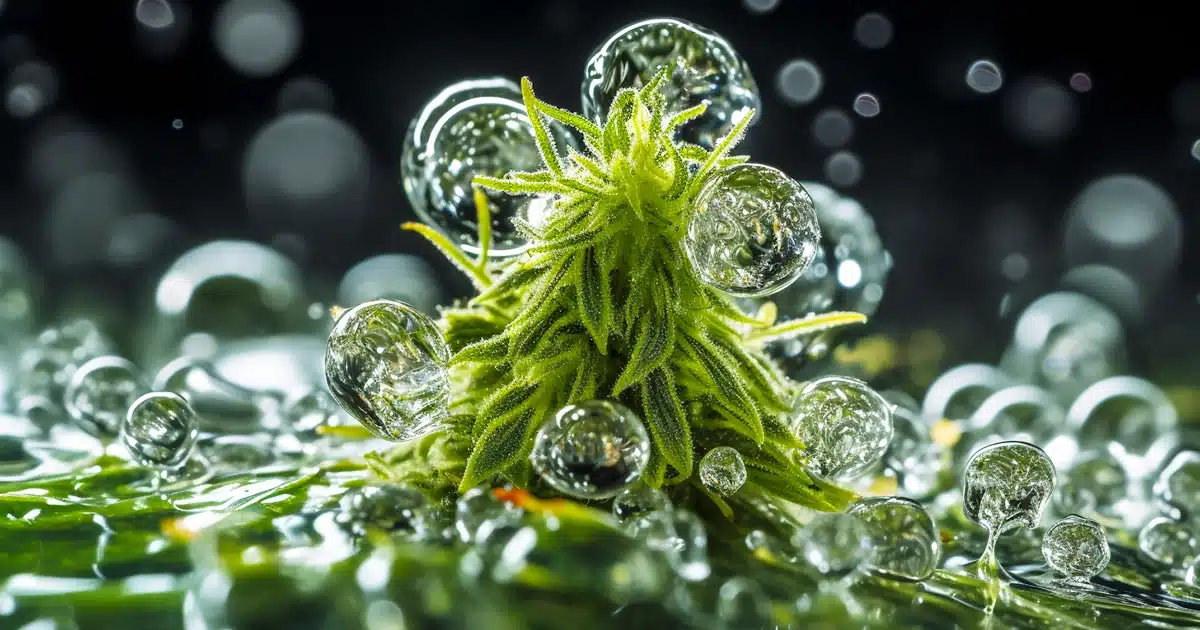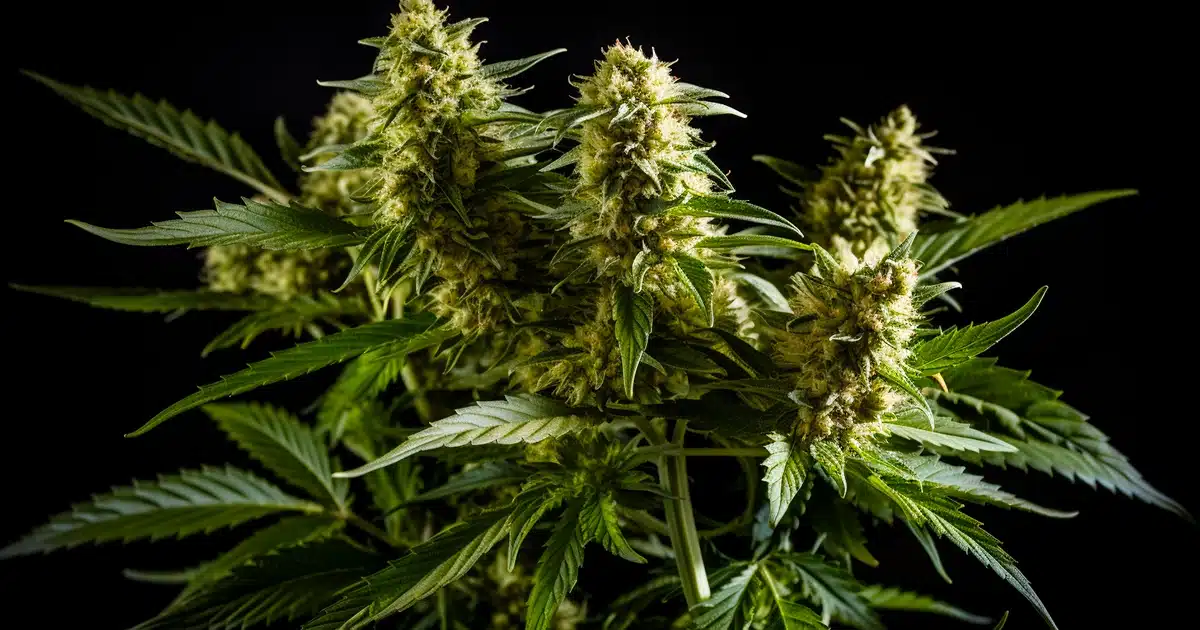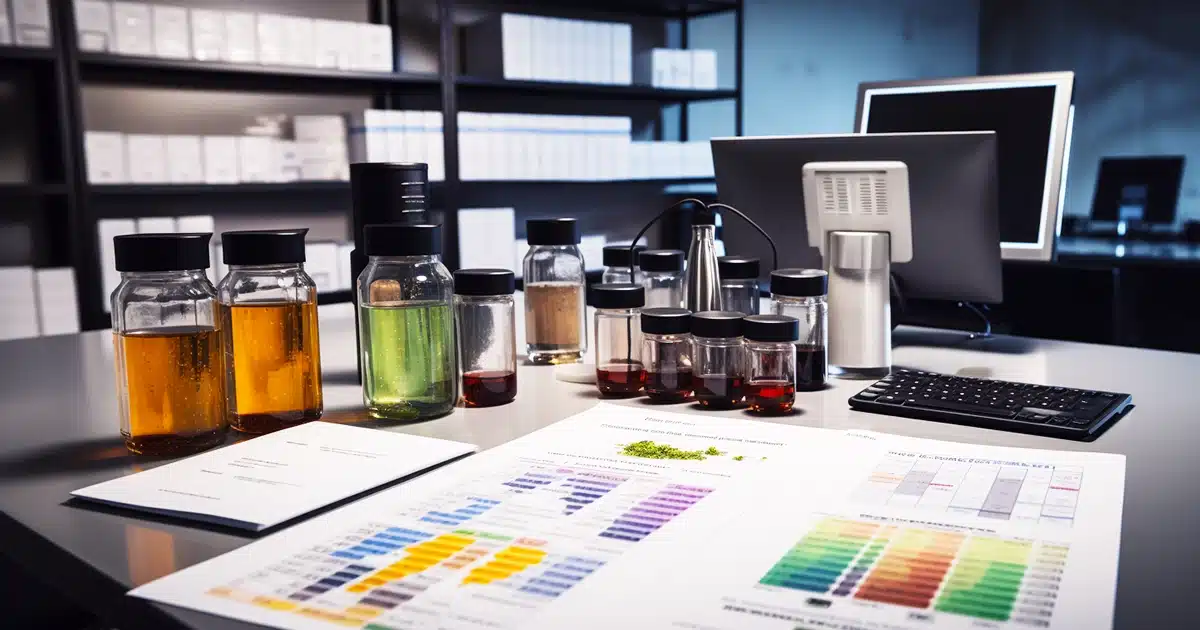What Is A Certificate of Analysis (COA)?
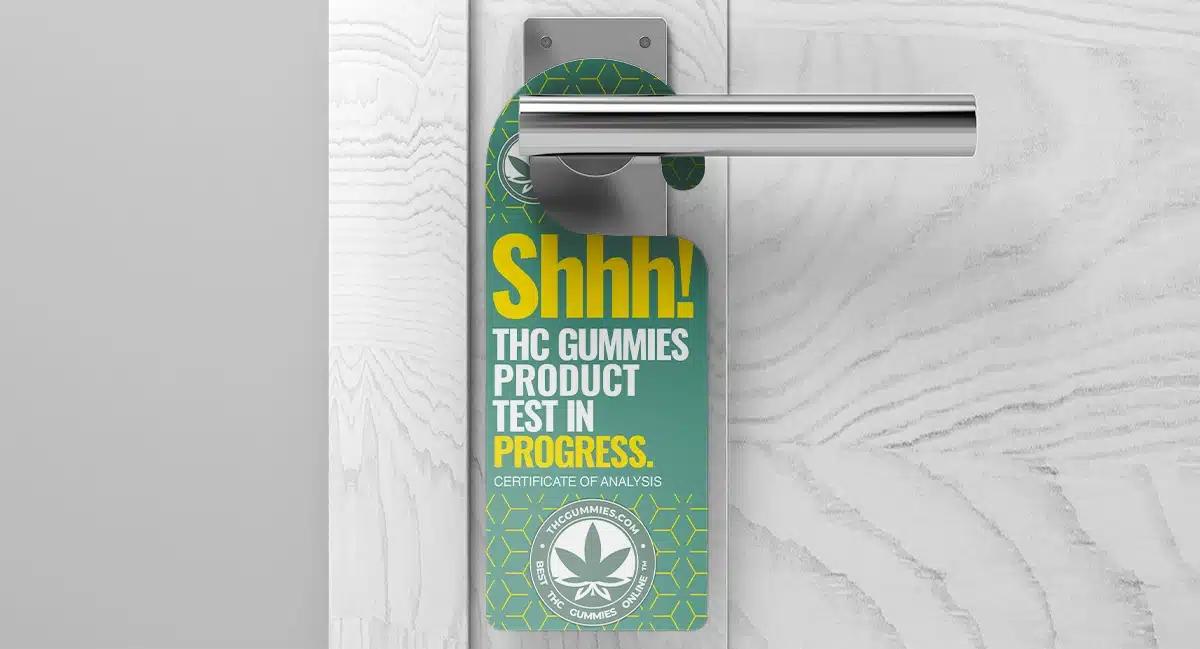

Christopher Visser
Multi-Cannabis Business Owner
Christopher Visser, the Founder and CEO of Cannabidiol Life and THCGummies.com, is a distinguished figure in the CBD industry, recognized for his pioneering contributions since 2016. With over 120 published articles, Christopher has become a reputable cannabis researcher, writer, and author. He's built two prosperous cannabis ventures that collectively generated millions in annual sales. His in-depth analysis of numerous cannabis studies, collaboration with medical professionals, and personal engagement with thousands of customers underline his expertise and commitment to advancing cannabis understanding daily.
-
 Written By:
Christopher Visser
Written By:
Christopher Visser
- Published:
- Updated: February 8, 2024
- Too Quiet, Light Up The Convo!
Third-party lab report?
Table of Contents
What Is A CoA?
CoA stands for Certificate of Analysis, which is a product report produced by a certified laboratory that’s independent from the manufacturers of the product. For purposes of being more easily understood, COAs are often referenced as “third-party lab tests” or “3rd-party lab reports.”
A COA is like a product report card in the form of a lab report. These tests are great for the marijuana and hemp industry because brands must purchase these tests from licensed, independent, third-party testing facilities.
The Information You Get From COAs
The information found on a CoA is a detailed rundown on what’s inside the cannabis product. A CoA can be offered after a single test is completed by a lab, but it could also contain up to 13 different tests!
The number of unique tests performed by the accredited lab is completely up to the manufacturers of the product. So, don’t be alarmed or confused as to why some lab reports are one-pagers, while others are 15+ pages long.
Whichever way the weed cookie crumbles, you can always expect to find at least one of the following pieces of information:
- Types/Amount/Percentage of cannabinoids found (THC, CBD, CBG, CBN, CBC, etc.)
- If any harmful chemicals/substances were found (heavy metals, pesticides, microbials)
- The products terpene profile (if applicable)
The Role of COAs in the Cannabis Industry
The sole purpose of Certificates of Analysis is to ensure product purity, potency, your safety, and to make sure you’re not getting scammed.
Since Marijuana doctors are in this industry to offer holistic therapeutic and medicinal options, the entire cannabis industry should adopt pharmaceutical medicine standards. In the pharmaceutical industry, a COA is required by regulatory agencies for drug approval.
COAs give cannabis consumers confidence knowing that the product they’re interested in has been tested by an independent and accredited lab. According to cannabis.ca.gov, in the cannabis industry, a COA is used to verify potency and ensure compliance with state regulations.
Certificates of analysis were put into effect for three specific purposes:
- ensure you that the final product is safe
- ensure that the product is high-quality
- ensure that the contents within the product match the marketing claims on the product label.
Now, numbers 1 and 2 above make complete sense, but what about number 3?
Is that really a concern?
Unfortunately, the answer is a 100% yes from us here at THCGummies.com. Further, according to foodstandards.gov.au, a survey found that 90% of food manufacturers consider COAs to be important for ensuring ingredient quality.
Third-Party Testing: Why Independent Lab Verification Is Essential
Cannabis products not containing the type of or amount of cannabinoids was big issue back in 2017 and 2018 right before the Farm Bill of 2018 was passed. There were so many non-professionals or directly, downright bad players in the cannabis industry, getting caught with incorrect amounts of cannabinoids in their products product.
In research conducted by JAMA (The Journal of American Medicine Association), 84 hemp products (approximately 70% of all products tested) inaccurately reported their CBD strength, either overstating or understating it. Furthermore, THC was found in 18 out of these 84 hemp items. In certain instances, the THC levels were high enough to potentially induce undesirable psychoactive effects.
Additionally, and this expands into THE ENTIRE DIETARY SUPPLEMENT INDUSTRY, this study found that 21% of dietary supplements tested did not meet label claims.
Without sugar-coating, getting products tested by independent labs is VITAL to:
- Avoid conflict of interests.
- Avoid opportunities for foul play.
- Ensure the safety of the consumer.
The Two Main Types Of COAs You'll Find
The most common test you’ll find on Cannabis brand websites is the Cannabinoid Potency Test because this is the only product analysis that is required by the FDA (Food and Drug Administration).
After the standard Cannabinoid Potency Test, you have a Full Panel Cannabis Test, and this report is where you can find up to 13 different tests in one Cannabis Certificate of Analysis.
Up To 13 Unique Tests In One Cannabis COA
Third-party Labs offer various tests for Cannabis brands to opt-in for; the more tests elected by the brand, the more expensive the COA will be.
In the following list, you will learn the following (in this exact order):
The Name of the test.
A description of the test.
The importance of the test.
The lab equipment/technology used to conduct the test.
Get your white lab coats people, because we’re “fully analyzing” full panel certificates of analysis.
#1. Cannabinoid Potency Test
Tests for: The amount of different cannabinoids, like THC and CBD, in cannabis products.
Importance: Determines product effectiveness. The amounts of cannabinoids can impact the product’s effects when consumed.
Equipment used: High-Performance Liquid Chromatography (HPLC) is commonly used.
#2. Heavy Metals Analysis Test
Tests for: Presence of heavy metals like lead, cadmium, mercury, and arsenic in cannabis.
Importance: Ensures safety, as even trace amounts of these metals can be harmful.
Equipment used: Inductively Coupled Plasma – Mass Spectrometry (ICP-MS).
#3. Pesticides Analysis Test
Tests for: Presence of harmful pesticides in THC and CBD products.
Importance: Ensures products are safe to use, as some pesticides can be harmful or even lethal.
Equipment used: Liquid Chromatography – Mass Spectrometry (LC-MS) or Gas Chromatography – Mass Spectrometry (GC-MS).
#4. Residual Solvents Analysis Test
Tests for: Presence of residual solvents in cannabis products like oils and concentrates.
Importance: Verifies that products are safe to consume. Residual solvents can be toxic or alter the product’s intended effects.
Equipment used: Gas Chromatography – Mass Spectrometry with Headspace Autosampling.
#5. Microbial Analysis Test
Tests for: Presence of molds and bacteria in cannabis samples.
Importance: Ensures product safety, as high levels of these microorganisms can pose health risks.
Equipment used: Varied. Could involve culturing microorganisms or using Polymerase Chain Reaction (PCR) tools.
#6. Terpene Analysis Test
Tests for: The types and quantities of terpenes in cannabis.
Importance: Helps identify unique properties of cannabis strains. Terpenes contribute to medicinal benefits and the overall cannabis experience.
Equipment used: Gas Chromatography with Mass Spectrometry and Headspace Sampling.
#7. Mycotoxins Analysis Test
Tests for: Presence of harmful mycotoxins, chemicals produced by fungi.
Importance: Protects consumer health as ingestion of mycotoxins can cause serious health problems.
Equipment used: Liquid Chromatography – Mass Spectrometry (LC-MS/MS).
#8. Foreign Matter Inspection Test
Tests for: Unwanted foreign materials in cannabis products, like hair, bugs, or metal.
Importance: Ensures product purity and safety. Contaminants can pose a health risk or degrade the product’s quality.
Equipment used: Visual inspections.
#9. Moisture Content Analysis Test
Tests for: The amount of moisture in cannabis products.
Importance: Prevents microbial growth, product recalls and ensures longer shelf-life.
Equipment used: Loss on Drying method.
#10. Water Activity Analysis Test
Tests for: The water vapor or ‘water activity’ within a product, which can allow microorganisms to grow.
Importance: Ensures product longevity and safety, as excess moisture can encourage microbial growth and shorten shelf life.
Equipment used: Water Activity Meter.
#11. Vitamin E Acetate Test
Tests for: The presence of Vitamin E Acetate in vaping products.
Importance: Protects consumer health. Vitamin E Acetate has been linked to serious health problems related to unregulated vaping products.
Equipment used: Various laboratory analysis techniques, including Liquid Chromatography and Mass Spectrometry.
#12. Homogeneity Testing
Tests for: Even distribution of active ingredients (usually cannabinoids) throughout a cannabis product.
Importance: Determines product quality. Ensures that every portion of the product delivers a consistent dose of cannabinoids.
Equipment used: HPLC and various physical assessment tools.
#13. Hemp Flower Analysis Test
Tests for: The Total Delta-9 THC content found in hemp plants.
Importance: Verifies that hemp crops comply with legal THC limits (below 0.3%). Essential for licensed hemp farmers and growers.
Equipment used: HPLC and Gas Chromatography (GC) are commonly used.
Pretty interesting stuff, right?
How to Read A Third-Party Lab Report
Now, you may understand COAs, but before you go shopping for edibles, please also make sure that you know how to read a Certificate of Analysis!
You learn more about what to look for as well, such as:
- The contact information of the Laboratory must be visible and accurate
- A batch number is a unique identifier, sometimes referred to as a LOT ID, that is used only once so you can call the lab and confirm it.
- QR Codes are used to conveniently scan with a smart phone to view the lab report on the Laboratories website.
- LOD (limits of detection)
- LOQ (limits of quantitation)
Learning this and especially the tips on how to verify the legitimacy of a cannabis product lab report can all be found in our interactive article that teaches you how to read a COA fast!
You’ll be impressing your friends at your next gathering for sure.
SUMMARY: Plain & Simple
COAs are Certificates of Analysis that are conducted for the overall safety of consumers and are often referred to as third-party lab tests or reports. They exist to provide product transparency and are certified with authenticity as the lab reports are completed by a third-party.
If you have any questions regarding this content or feel we didn’t provide accurate information, please let us know!
- Visit our contact us page to view all available correspondence options
- Leave a comment or ask a question in the comments section below to begin a community discussion.

If this article sparked a new insight, pass the flame…
LET’S IGNITE RIPPLES OF CANNABIS WISDOM.
Be the catalyst for someone’s breakthrough moment.
SHARE ON SOCIAL MEDIA

YOUR CANNABIS EDIBLE
JOURNEY CONTINUES:
Looking For Something Else?

